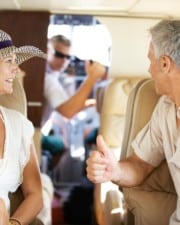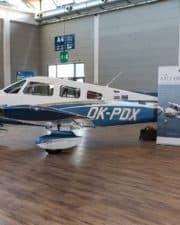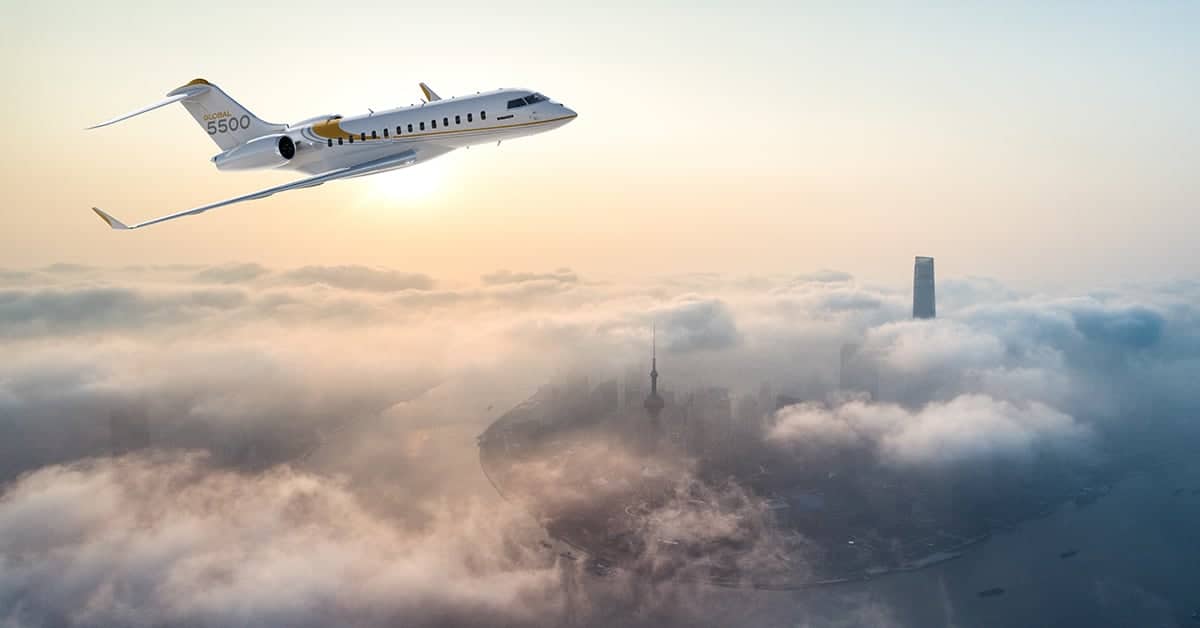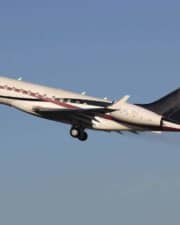In an era where private jets seem to be all the rage, you don’t necessarily have to own one to fly on one. Indeed, there are a number of ways to do this, the most popular of which being air charter. But unless you travel a lot, or work in aviation, you may be unsure as to what exactly an air charter is and more importantly, how it works. So what is it, and how does it work?
Simply put, air charter is the process of renting (chartering) an entire aircraft for a given purpose. This could be the transportation of business executives, cargo and even critically ill patients. Aircraft available for charter range in size from small twin propeller aircraft all the way up to the 747.
What is Air Charter?
Air charter is exactly what the name suggests: chartering your own aircraft. It is the process of purchasing an entire aircraft for a journey, rather than just purchasing a ticket like you would on a commercial airliner.
Air charter is most commonly associated with private jets flights (which make up a majority of such flights), however, you can quite easily charter flights for other types of aircraft too.
It’s not uncommon to see airliners under charter for destination flying (think large group trips), medevac chartering and even cargo flights.
By chartering, the passengers effectively get complete control of the entire flight, being able to choose a time, date and location that suits them perfectly, rather than being constrained by the fixed itinerary of commercial airlines.
How Does Air Charter Work?
Booking an air charter usually starts off with the client reaching out to what’s called a Part 135 operator, or more colloquially, a private jet operator, or an air charter broker, which is kind of like a travel agent for private jets.
Upon reaching out to the Part 135 operator/air charter broker, they will discuss all aspects of your flight, from the aircraft you’ll fly on, to the arrival and departure times and locations, to the dietary requirements of the passengers.
With this information on hand, the operator/broker will begin sourcing flights from their network to prepare a quote with. Once compiled, this quote sheet is then sent back to the client who then picks one of the options based on their needs.
This choice is then conveyed back to the operator/broker who prepares a charter agreement, laying out both parties’ rights, confirming flight details, and making payment options available.
As soon as payment is made, the flight is booked. If booked through a broker, other services, such as ground transport and even hotel arrangements may be made in addition to flight (or may be arranged separately by the client).
The flight then takes place on the arranged date at the arranged time. The broker or sales representative you booked through may meet you at the arrival/departure location if necessary and/or to ensure a smooth flight. This is repeated for any return/additional legs of the journey.
What are the differences between charter flights and normal flights?
Whilst both normal and charter flights may appear outwardly similar; they both involve a passenger or passengers getting on board to travel to a specific location, both types of flights are inherently different. Some of the most noticeable differences are:
- Purpose: Charter flights are personalized for specific individuals or groups, while normal flights serve the general public on scheduled routes.
- Flexibility: Charter flights offer more flexibility in scheduling and route selection, while normal flights adhere to fixed schedules.
- Privacy: Charter flights provide a higher level of privacy as the aircraft is reserved for the charter client, whereas normal flights involve sharing the aircraft with other passengers.
- Customization: Charter flights can be customized based on individual preferences, while normal flights have standardized offerings with limited customization options.
- Access: Charter flights can reach smaller airports and remote locations, expanding travel options beyond normal flights.
- Passenger Experience: Charter flights provide a more tailored and personalized experience, while normal flights offer a standardized passenger experience.
Do charter flights have tickets?
Charter flights typically do not operate on a ticket-based system like commercial airlines. Instead of individual tickets, charter flights are typically booked as a whole aircraft or a specific number of seats on an aircraft for a specific time and route.
Once the details of the flight are confirmed, you will receive a charter agreement or contract outlining the terms and conditions of the charter, including the agreed-upon itinerary and pricing. Payment is typically made directly to the air charter provider or through the charter broker.
So, while charter flights don’t typically involve traditional tickets, you will still have proof of your flight’s arrangements (much like you find on a modern airline ticket) without having to show a physical ticket.
Who uses charter flights?
Whilst wealthy people may be the most famous group to use charter flights. They are by no means the only group, others are:
Business Executives
Executives, corporate teams, and business professionals often opt for charter flights to travel to meetings, conferences, or other business-related destinations. Charter flights offer flexibility, privacy, and the ability to reach remote or underserved locations efficiently.
High Net Worth Individuals
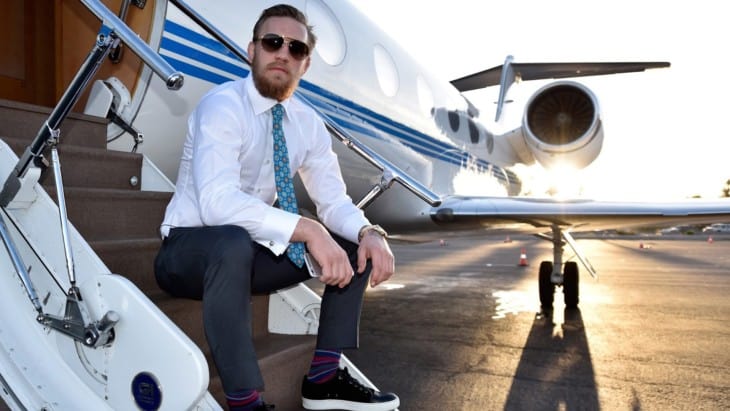
Charter flights are a prime option for affluent individuals and notable public figures (celebrities, business heirs etc.) seeking the ultimate in opulence, comfort, and exclusivity.
These elite passengers are drawn to private jets for their ability to offer bespoke service, tailor-made itineraries, and a secluded space perfect for both unwinding and conducting important business while on the go.
Sports Teams
Athletes are often quite famous, a team of athletes is likely going to cause airport security some problems. As a result, when sports teams need to travel long distances for competitions, games etc. they charter aircraft to ensure their athletes are safe and get there on time.
Government Officials
While many governments and government departments operate their own fleets of aircraft, they are not always suitable – or even available – for high ranking government officials to use.
To this end, governments across the world spend millions of dollars renting aircraft to transport their officials, as the sensitive and time-sensitive nature of government business often makes commercial travel unfeasible.
Tour Groups and Travel Agencies
Travel agencies and tour operators sometimes charter flights to accommodate group travel, such as destination weddings, family reunions, or group tours. Chartering an aircraft allows them to customize the travel experience, schedule flights based on their specific needs, and offer exclusive services to their clients.
Medical Evacuations
When it comes to medical emergencies or the transfer of patients in need of special medical attention, charter flights are the go-to mode of transportation.
These flights (known as medical evacuations or MEDEVACs) come equipped with all the necessary medical equipment and are staffed by highly trained medical professionals, guaranteeing the safe and secure transfer of patients.
Cargo
Charter flights serve a crucial role in transporting time-sensitive or large cargo. From logistical companies to oil and gas corporations, even emergency relief organizations rely on charter flights to swiftly and effectively deliver goods to their desired destinations.
Can you charter a helicopter or just fixed wing aircraft?
Aircraft charter is not just limited to fixed wing aircraft, you can indeed charter a helicopter as well.
Helicopter charters are particularly useful in urban areas, where vehicle congestion is considerable and/or time is of the essence.
Many charter brokers offer helicopter transfers for their clients, allowing their client to be picked up from the heliport closest to their office, home or hotel and be flown directly to the airport where their fixed wing aircraft charter is waiting for them.
Other common types of helicopter charter include sightseeing flights, aerial photography, remote cargo transportation and Medevac flying among others.
Do charter flights have flight attendants?
The answer isn’t clear cut – it all depends on the specific details of the charter and the agreement with the air charter company.
For certain types of charters, especially those with bigger aircraft or at the request of the client, flight attendants may be included to enhance the overall flight experience.
Their role goes beyond simply serving food and drinks – they also ensure the safety and comfort of passengers throughout the flight by conducting safety briefings, assisting with boarding and disembarking, and attending to any needs that may arise
Similar to those on commercial flights, flight attendants on private jets are proficient in both emergency procedures and customer service. Their presence not only adds to the convenience of passengers, but also elevates their overall flying experience.
It is worth mentioning that not all charter flights offer the services of a dedicated flight attendant. Smaller charter planes or flights with fewer passengers may not have this option available.
To fully customize and plan the services and amenities for your charter flight, including the presence of a flight attendant, it is recommended to communicate with the air charter provider at the time of booking.
Do you need a passport to charter a plane?
Most likely, yes. This is particularly true if you are traveling to international destinations. The need for a passport is determined by the immigration and customs regulations of the countries you will be visiting or flying over.
Passport control plays a crucial role in international travel, as it verifies your identity, citizenship, and admissibility into foreign countries.
Even for domestic charter flights, it is recommended to have a valid form of identification on hand, such as a passport or government-issued photo ID. This is because security protocols may still be in place at airports.
How much does it cost to charter a plane?
The cost of chartering a private jet varies significantly depending on several factors, including the type of aircraft, distance traveled, flight duration, additional services, and the specific market conditions. Though it varies, you can expect to pay the following for each type of private jet:
- Very Light Jets (VLJs): Hourly rates range from $1,500 to $3,000.
- Light Jets: Hourly rates range from $2,500 to $4,000.
- Mid-Size Jets: Hourly rates range from $3,500 to $6,000.
- Super Mid-Size Jets: Hourly rates range from $4,500 to $8,000.
- Large Jets: Hourly rates range from $6,000 to $10,000
- Bizliners (Large VIP-configured Jets): Hourly rates can exceed $10,000, depending on the specific aircraft and customization.
It’s important to note that these are general estimates and actual charter prices can vary significantly based on factors such as the specific aircraft model, availability, market demand, seasonal fluctuations, fuel costs, airport fees, and any additional services requested (e.g., catering, ground transportation).
Moreover, there may be additional charges beyond the hourly rate, such as landing fees, crew expenses, overnight costs, and taxes.
Each charter provider and broker will have their pricing structure, so it’s essential to consult with a reputable air charter broker or charter operators for accurate and up-to-date pricing based on your specific travel requirements.
Is Chartering a Private Jet Cheaper Than Flying Commercial?
Chartering a private jet is generally more expensive than flying commercially. Private jet charter costs can vary significantly depending on factors such as the type of aircraft, distance traveled, flight duration, additional services, and the specific market conditions.
There are several reasons why private jet charter tends to be more expensive:
- Exclusive Use: When chartering a private jet, you are essentially renting the entire aircraft or a specific number of seats. The cost is typically based on the entire aircraft, regardless of the number of passengers. In comparison, commercial flights distribute the cost among a larger number of passengers.
- Operating Expenses: Private jets have higher operating expenses than commercial airlines. These expenses include fuel, maintenance, crew salaries, insurance, hangar fees, and other operational costs. These costs are reflected in the charter price.
- Efficiency and Flexibility: Private jet charters offer greater flexibility in scheduling and route selection, allowing you to choose the most convenient airports and travel at your preferred times. This level of flexibility and personalized service comes at a premium.
- Luxurious Amenities: Private jets often provide luxurious amenities and personalized services that are not available on commercial flights. These added comforts contribute to the higher cost of private jet charter.
That being said, there are instances where private jet charter can be cost-effective when considering factors such as group travel, time savings, convenience, and the ability to reach remote destinations.
For individuals or organizations with specific travel requirements and the means to afford it, the benefits of private jet charter may outweigh the higher costs.
It’s worth noting that there are various ways to access private jet travel, including fractional ownership, jet cards, and membership programs, which can provide more cost-effective options for frequent travelers compared to full aircraft charters.
What are the Advantages of Charter Flights?
Charter flights offer several advantages compared to regular commercial flights. Here are some key advantages:
Flexibility
Charter flights provide a high degree of flexibility. You have the ability to choose the departure and arrival times, as well as the destinations and routes. This flexibility is especially beneficial for business travelers, sports teams, or individuals planning group trips.
Customization
Charter flights can be tailored to suit your specific needs. You can select the type and size of the aircraft that best accommodates your group, whether it’s a small jet for a corporate trip or a larger aircraft for a group vacation. Additionally, you have control over in-flight services, such as meals, amenities, and even branding opportunities.
Time Efficiency
Charter flights save time by eliminating the need for lengthy check-ins, security lines, and boarding processes associated with commercial flights. You can arrive at a private terminal closer to your departure time, reducing waiting times and maximizing productivity.
Additionally, charter flights often have fewer restrictions on baggage, allowing you to travel with more convenience.
Privacy and Comfort
Charter flights provide a higher level of privacy and comfort compared to commercial flights. You have exclusive use of the aircraft, meaning you can conduct confidential business meetings, relax with family and friends, or enjoy personalized services without any disturbances.
The cabin layout and seating arrangements can also be customized to your preferences, ensuring a comfortable and luxurious travel experience.
Access to Remote Locations
Charter flights can take you directly to remote or less accessible destinations that are not well-served by commercial airlines. This is particularly useful for reaching remote islands, rural areas, or private airstrips, enabling you to save time and avoid multiple layovers or transfers.
Reduced Travel Stress
Charter flights offer a stress-free (or at least less stressful) travel experience. You can avoid crowded airports, long security lines, and the uncertainties of who your fellow passengers will be. The personalized service and dedicated staff onboard can further enhance your comfort and overall travel experience.
What are the Disadvantages of Charter Flights?
That being said, chartering your own aircraft isn’t all sunshines and rainbows. There are a number of potential downsides to chartering, which are:
Cost
Chartering a private jet is expensive. Even short flights can cost tens of thousands of dollars, with fewer amenities than those found in first class on a commercial airline.
Even flying a longer distance, it can be argued that the added cost isn’t worth a few more amenities than flying the same route on a commercial airline.
Limited Availability
Air charter services may have limited availability, especially during peak travel seasons or in remote areas. Finding a suitable aircraft for charter, particularly at short notice (one of the main perks of flying private) can be challenging, potentially causing you problems if no flight can be booked in time.
Size and Capacity Constraints
Charter aircraft come in various sizes, and their passenger capacity is limited when compared to commercial airlines. If you require transportation for a large group, finding an adequately sized charter aircraft can be more difficult – not to mention expensive – than booking with a commercial airline.
Maintenance and Safety Oversight
Charter aircraft are subject to maintenance and safety regulations, but these are less stringent than those governing commercial airlines.
Because of this, different charter operators have different maintenance standards, some of which are better than others. It’s usually recommended that you book any charter flights with Wyvern and/or Argus certified operators, as these uphold the best maintenance standards in the industry.
Limited Infrastructure
While commercial airports have well-developed infrastructure and facilities, some airports may have limited resources for private charters. This could mean less efficient ground handling, restricted passenger amenities, or additional costs for certain services.
Related Posts




